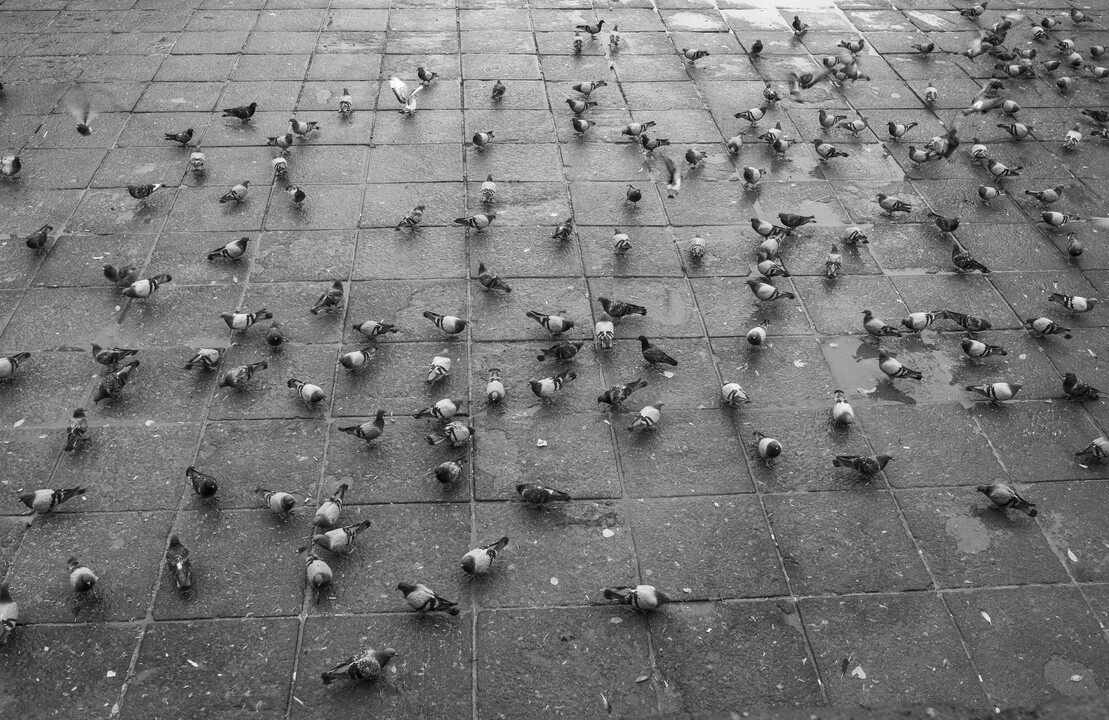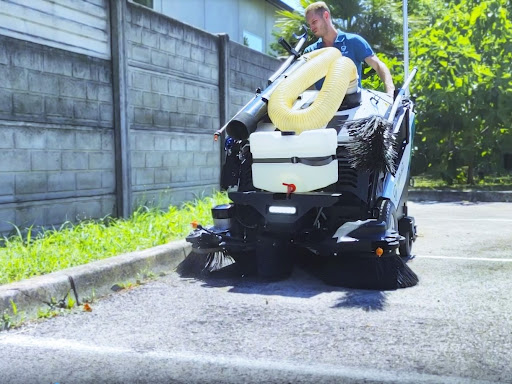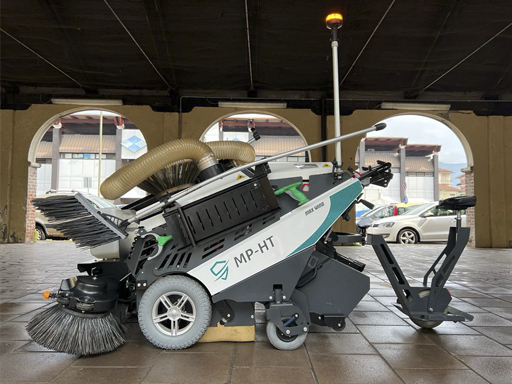
Pigeon guano: risks, removal and solutions
Learn about the problem of pigeon guano with our guide: discover the risks and how to eliminate it with MP-HT for efficient and sustainable urban cleaning.
Read the articleWeed removal from roads and sidewalks is a significant challenge for municipalities, service providers, and private property owners. Eliminating them is crucial for aesthetic reasons and for public safety.
The term "weeds" refers to all types of unwanted plants that spread in gardens, lawns, as well as in squares, sidewalks, and along roadsides. These invasive plants are characterized by their high resistance, rapid spread, and ability to penetrate the substrate, thus gaining access to water and causing mechanical damage to structures and surfaces.
Preventing the degradation caused by this unwanted vegetation impacts multiple aspects:
Aesthetic. Urban decor represents the beauty of a urban space and influences the quality of life within a community. Regular and systematic maintenance and cleaning of public spaces ensure living in a clean and tidy city, making it more beautiful and attractive.
Safety. Weeds in squares, sidewalks, and streets, if not removed, can become dangerous traps for both vehicles and pedestrians. They can compromise normal traffic flow and lead to hazardous slips or trips.
Structural. Invasive greenery infiltrates all types of buildings and pavements, especially during warmer and more humid months. The roots of these plants penetrate even the smallest cracks and, over time, become a real source of risk to the functionality and safety conditions of roads and infrastructure.
Hygienic. The presence of unwanted weeds near urban centers can foster the proliferation of rats, insects, and parasites dangerous to human health. Additionally, they can contribute to the development of seasonal allergies.

Given that the use of certain herbicides poses potential risks to human health, the European Commission, as part of the Green Deal program in recent years, has put forward a series of proposals to limit and reduce the use of certain chemicals commonly used to remove weeds. The objective is to reduce the use of plant protection products in the EU by 50% by 2030.
With this goal, an increasing number of municipalities have started to issue ordinances that restrict the use of these products in favor of alternative green methods, more environmentally sustainable. This transition towards the use of ecological alternatives focuses on a different approach to the problem, specifically encouraging the adoption of preventive strategies, regular and continuous maintenance, and experimentation with less toxic products for the environment and the operator.
In Italy, for example, each region has drawn up its own Regional Action Plan (PAR), imposing restrictions on the use of chemicals such as glyphosate in all urban areas frequented by the population, both for private individuals and public entities.
In Italy, as established in Legislative Decree 285/92 of the Highway Code, the sidewalk is considered public land, and therefore its maintenance falls upon the entity that owns it, namely the Municipality. This decree entirely exempts condominium owners from the cleaning and maintenance of the sidewalk.
However, there is an exception: if the sidewalk is adjacent to condominium buildings accessible only from a private road the ownership and responsibility for the sidewalk fall upon the owners of the entire condominium. This means that the entire condominium is responsible and owner of the sidewalks, so it will be up to the condominium residents to carry out maintenance operations, including: repairing potholes and pavement, clearing snow, leaves, etc., and spreading salt in winter.
For a beautiful, clean, and safe city, it is important to recognize the need to remove spontaneous weeds. Nowadays, weed control using herbicides is being replaced by mechanical methods. Among these, we have:
MECHANICAL WEED CONTROL. Scraping brushes, brush cutters, and lawnmowers are a widely used alternative that allows the removal of unwanted weeds along the edges of sidewalks, roads, and in urban centers. This method, which does not always allow for the removal of roots, requires continuous and constant programming, especially during the warmer months.
FLAME WEEDING. The technique of flame weeding uses the heat generated by the flame to "cook" unwanted weeds and detach them from the soil. The elimination is immediate, but this method does not always guarantee the destruction of roots. Additionally, this treatment is not suitable in dry and arid weather conditions.
HIGH-PRESSURE CLEANER. This machine uses high pressure hot water to eliminate weeds and even destroy roots by penetrating the cracks in infrastructure. One limitation of these machines is the limited working width they can cover.
STEAM WEED CONTROL. Through the use of a special machine equipped with a boiler, this method uses steam to produce a thermal shock to the weed. The steam "cooks" the plant, causing it to dry out and lose the strength to regrow. The limitation of this treatment is the high costs associated with the consumption of diesel and water used by the machinery.

MAX WIND is a compact and fully electric sweeper designed to enable frequent, rapid, and thorough cleaning of streets and pedestrian areas. With a sweeping width of 125 cm (with the two side brushes), MAX WIND ensures professional mechanical sweeping even in the narrowest spaces. It effectively removes guano pigeon and weeds along sidewalks, thanks to the installation of a special side scraping brush.
The scraping brush installed on the MAX WIND sweeper is a professional and environmentally friendly alternative for the mechanical removal of weeds along sidewalk edges and in historical city pavements. The sweeper is equipped with a suction system, so it not only removes the weeds but also collects them directly from the ground, leaving the pavement clean. It is worth considering that on a clean surface, it is less likely for weed seeds to settle and develop.
MAX WIND street sweeper is a versatile machine, designed to complement manual sweeping activities and allow municipalities to ensure daily cleaning.